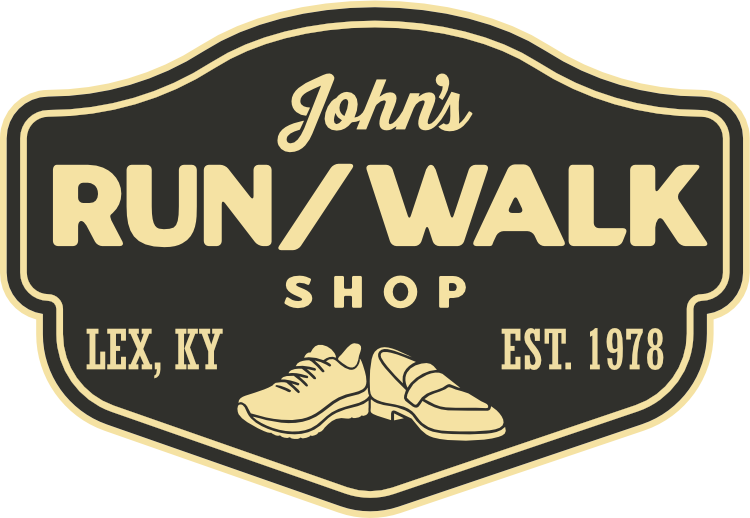Set Realistic Race Goals with Critical Speed
Guest post by Lance Bollinger, PhD, CEP
Associate Professor, Dept. of Kinesiology and Health Promotion, University of Kentucky
Most runners, whether recreational or competitive, experience some performance anxiety when preparing for a race. This is especially true when preparing for a new distance or trying to run their best time possible.
Whether you’re competing for an overall win, PR, age group award, or just trying to do your best, it’s important to set realistic goals. However, it can be difficult to determine objectively what a realistic performance might be.
So, how can we determine what a reasonable goal is for a new race? One helpful tool is critical speed.
What Is Critical Speed?
Exercise physiologists and running coaches routinely use the relationship between running distance and finish time from previous races or recent training sessions to estimate optimal running performance based on critical speed, the average speed (mph) that someone can sustain for a prolonged time without fatigue.
This tool is best suited to race distances of 5k (3.1 miles) or longer. Running faster than critical speed will result in premature fatigue while running slower than critical speed could be considered less than a maximal effort.
To visualize critical speed, we can graph finish times from various race (or training) distances on the horizontal axis and race distance on the vertical axis. In the figure below, I plotted PRs from the venerable Haile Gebrselassie (arguably the G.O.A.T. of distance running) and myself (a reasonably competitive age-group runner) for distances up to a marathon.
Notice that in both instances there is a highly linear relationship between distance and finish time! The slope of this line represents critical speed. This came out to be 12.56 for Gebrsellaise and 8.67mph for me.
Since most runners are more comfortable thinking in terms of pace (minutes per mile), we can divide 60 by critical speed to get an idea of the average pace that could be sustained. Doing so reveals a pace of 4.78 minutes (4:46) per mile for Gebrsellaise and 6.92 (6:55) minutes per mile for me. The y-intercept here shows the “maximal aerobic running distance.” Although this isn’t especially relevant to determining the average pace you can sustain, it is important if you want to predict finish times at various race distances.
How can you use critical speed to set realistic racing goals?
For one thing, this doesn’t just apply to highly competitive runners. You can plot your training data (or recent race results) to determine your own critical speed or pace. This is most accurate if you have data from similar terrain, environmental conditions, and fitness levels.
Using preseason running data may not be accurate, as you gain fitness throughout the season. Similarly, using data from the winter or early spring may not translate well to summer running when environmental conditions are hotter and more humid.
You can also consider using training data or recent race results rather than using your PR data. For example, all of my PRs are more than a decade old at this point. Rather than trying to chase a PR that I’m unlikely to attain, I can model performance from recent races or training sessions to better reflect my current fitness level and performance.
What Distances Should I Include In Critical Speed Calculation?
Although you can certainly estimate, critical speeds are new distances that are longer or shorter than you have ever run. You’ll get the best data if you have solid performances at both longer and shorter distances than what you’re preparing to run.
For example, including short distances (say 1,500m) to predict long distances (say 50k) will likely overestimate running speed. Eliminating the 1500 and 3000m races from Gebrsellaise’s data drops the estimate of critical speed to 12.39 mph (a 1.5% decrease). For a highly competitive athlete like Gebrsellaise, this isn’t essential (his average velocity was actually 12.68mph in his marathon PR), but recreational runners may have more difficulty maintaining critical speed at these long distances.
Conversely, including your 50k PR is likely to underestimate your speed for a 3k in a very big way. Longer running distances tend to have more “pull” on the estimate of critical speed than short races do.
To use another example, eliminating my marathon PR from my critical speed actually increases the estimated speed to 9.63 mph (a 10% increase). So, using performances from distances similar to that which you are preparing for will likely give you the best estimate of your running ability.
Calculating critical speed and predicting running performance can be a bit of a hassle if it’s not part of your day job. I’ve provided a downloadable spreadsheet that allows you to input your finish time at various race distances to calculate your own critical speed and predict running times of various races.
You don’t need data for every single race distance. As long as you have 3-4 solid performances, you should be able to get good data.
The main goal of calculating Critical Speed
Critical speed is a valuable tool for estimating optimal running performance. However, actual race-day performance can be affected by many outside influences (hydration, nutrition, injury, race strategy, and environmental conditions to name a few).
You will certainly have days where you may not be able to perform at your peak ability (and a few where you might exceed what we think your limits are). The objective is to have a basis to set realistic, objective goals for yourself and feel good about your running accomplishments.



